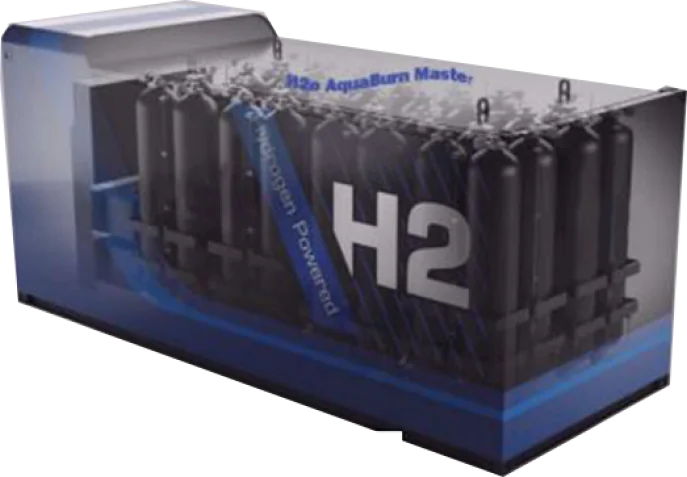

Hydrogen generators can use two very different technologies to turn hydrogen into electricity.
The first is the internal combustion engine – similar to the combustion engine used in current diesel generators. Here, a hydrogen-air mixture is burned inside a combustion chamber. Just like diesel, this miniature explosion produces force to turn a crankshaft and an electrical current is generated via the attached alternator.


No moving parts mean that hydrogen generators run virtually silent with no vibrations. Perfect for operating in urban environments or late into the night.
Hydrogen generators produce only water. No emissions or fuel spill risks make it ideal for Ultra Low Emissions Zones or environmentally sensitive locations.
Mobile, plug-and-play deployment, and with similar operational procedures, it should lead to minimal operational or training changes.
No moving parts reduce maintenance costs and increase reliability compared with diesel gensets. Thus, reducing project delivery risk.
Sub-second response time, plus excellent start-up and load following. Also, hydrogen generators only consume H2 when power is being drawn.



Designed for hydrogen fuel cell power systems with widespread component interoperability
The solution features a Solid Polymer Electrolyte Membrane (PEM) fuel cell for high-efficiency energy conversion.
Compact, durable steel housing featuring lockable access doors and a textured paint finish for corrosion and abrasion protection.
It can operate in a range of temperatures, from -30 to 45C, and has a low-maintenance 20-year design life.

Fully integrated controls, including externally mounted emergency stop switch, electronic trip main line circuit breaker and remote start/stop.

Can be configured to meet the National Fire Protection Association’s NFPA110 standard for emergency and standby power systems.
The hydrogen fuel cell power system is prototype-tested and factory-built within Utilitarget H2 AquaBurn facilities.

Can be used for prime power, peak shaving and emergency power with the option to export excess energy to the grid through a net metering program.
When hydrogen comes from a renewable source such as solar, the system produces zero emissions across its lifecycle, offering a sustainable solution.




A hydrogen generator is a device that produces hydrogen gas through the process of electrolysis or reforming. In electrolysis, water is split into hydrogen and oxygen using an electric current. The hydrogen gas produced can be used for various applications, including energy production and industrial processes.
H2 AquaBurn hydrogen generators offer high efficiency, reliability, and customizable solutions for different needs. They are designed to produce high-purity hydrogen gas, reduce operational costs, and contribute to cleaner energy solutions by minimizing emissions.
To select the appropriate hydrogen generator, consider factors such as the required hydrogen production rate, purity levels, space constraints, and energy sources. H2 AquaBurn’s team can provide personalized recommendations based on your specific requirements and application.
Routine maintenance for H2 AquaBurn hydrogen generators includes checking and replacing filters, inspecting electrolytic cells, and ensuring proper operation of all components. Regular maintenance ensures optimal performance and longevity of the equipment. For detailed maintenance schedules, refer to the user manual or contact our support team.

Call to discuss about your project (716) 871-1111

A Carbon Neutral Go Green Provider.
Copyright © 2024 H2 AquaBurn All Rights Reserved.